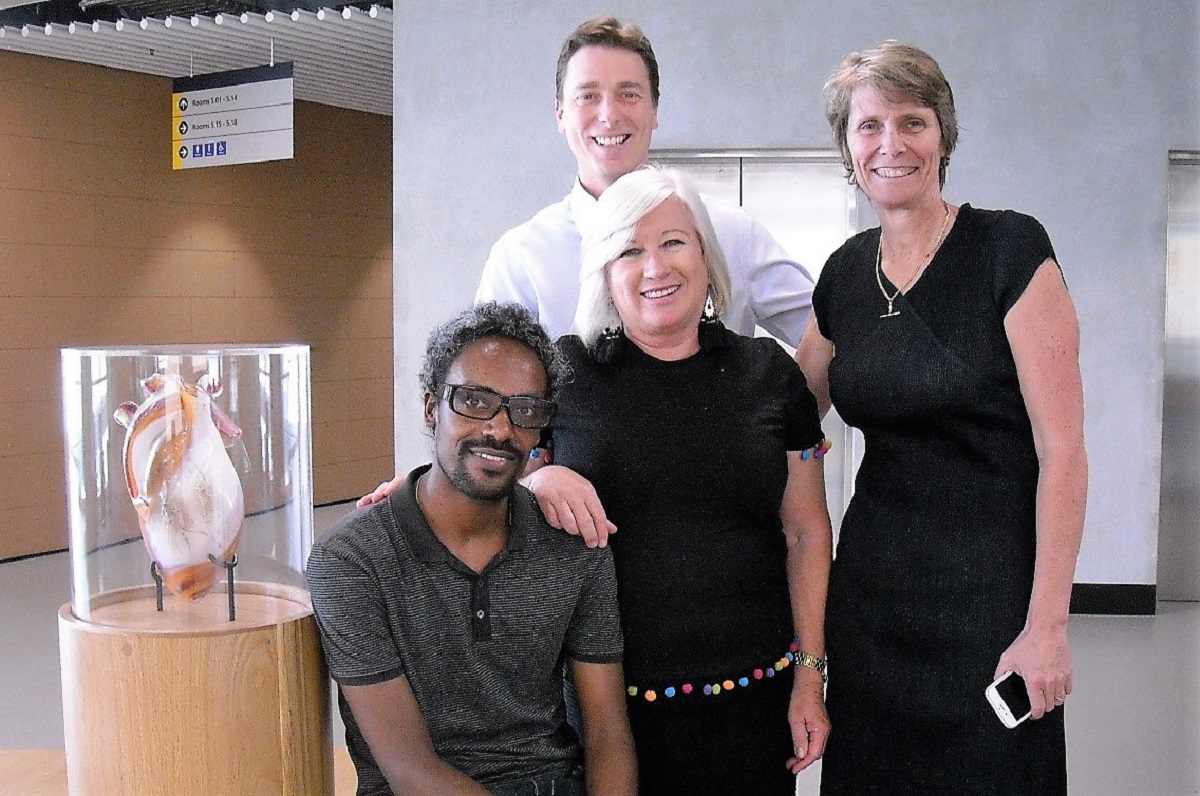
Dressing smart to monitor cardiac health
E-textile technology: the smart alternative to in-hospital monitoring of cardiac patients
Cardiovascular disease is the most common cause of death globally, and is reported to be the primary reason for hospitalisation, particularly in older people.
With the predicted increases in life expectancy and rates of cardiovascular disease, healthcare providers will experience a greater burden of cardiovascular-related events in the future. Therefore, it is necessary to find a viable alternative to in-hospital monitoring of cardiac patients during their rehabilitation.
In recent years, progress has been made toward using novel approaches, such as e-textile-based monitoring and cardiac rehabilitation at home. E-textiles are ‘smart fabrics’, an emerging technology where electronic elements or circuits are woven directly into the fabric.
Electrocardiogram (ECG) monitoring is used as a baseline for prescription of exercise therapy in cardiac rehabilitation programs. Therefore, with the use of e-textile-based ECG monitoring of cardiac patients, could home-based rehabilitation programs be an alternative to hospital-based rehabilitation programs?
A scoping review in the current issue of the JBI Database of Systematic Reviews and Implementation Reports (JBISRIR) examines the use of e-textile-based ECG monitoring of cardiac patients and evaluates the application of e-textile technologies for ECG cardiac monitoring. A team of eight researchers comprising experts from engineering, health science and nursing, and library science examined a broad range of literature and developed the conceptual boundaries for e-textile-based monitoring of cardiac patients in hospital, the community or at home.

Lead author of the scoping review, Meseret Teferra, who is pursuing his PhD degree in Biomedical Engineering at Flinders University, South Australia, says that research shows that smart fabrics could be highly suitable for continuous, non-invasive tele-monitoring of cardiac patients:
“ECG transduction based on textile sensors was one of the well-researched areas, and one of the sensor types studied in detail which shows the most promising results is ECG electrodes that produce a signal of acceptable quality and can be repeatedly washed without losing their properties.”
“We also found that the signal quality acquired from the commercial wet gel electrodes deteriorates for long-term ECG monitoring. However, e-textile ECG showed better performance for extended cardiac applications”, Mr Teferra added.
While ECG transduction based on textile sensors was one of the well-researched areas, research is yet to investigate the use of a 12-lead, personalised, home-based cardiac rehabilitation monitoring system containing fully textile-integrated electronics with diagnostic capabilities. Therefore, there is potential for future research in this area.
The authors also found that there was a lack of research including children, who may benefit from important potential applications of this technology:
“Approximately 88% of the total studies focused on the adult population so there is the potential for future research for diverse populations, such as paediatric populations. Critically ill infants, for example neonates with cardiorespiratory disease and sudden infant death syndrome (SIDS), could benefit from the unobtrusive nature and long-term application of the e-textile ECG", reported Mr Teferra.
The scoping review’s authors conclude that advancements in signal quality and noise reduction in e-textile-based ECG monitoring of cardiac patients are promising, and that the burden on healthcare systems owing to cardiovascular hospitalisation may be reduced by the use of e-textile-based ECG monitoring of cardiac patients.
“With healthcare providers already struggling to cope with demand, there is increasing pressure to promote home-based healthcare services. Moreover, there is a growing demand for continuous follow-up of cardiac patients where home-based cardiac rehabilitation delivers optimal recovery. For patients with cardiac disease, e-textile-based rehabilitation programs may offer a viable option because e-textile-based rehabilitation and/or monitoring can continue outside of the hospital, reducing the burden on healthcare systems”, concludes Mr Teferra.
Reference
Teferra MN, Ramos JS, Kourbelis C, Newman P, Fleury A, Hobbs D, et al. Electronic textile-based electrocardiogram monitoring in cardiac patients: a scoping review. JBI Database System Rev Implement Rep 2019; 17(10): 1958–98.